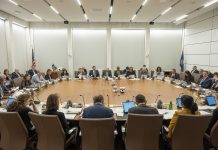The Fed’s International Dollar Liquidity Facilities: New Evidence on effects – NBER Working Paper
by Linda Goldberg and Fabiola Ravazzolo
This NBER working paper provided basic analysis and descriptive evidence on the effect of Federal Reserve’s US Dollar liquidity policies, including central bank swap lines and FIMA repo.
The analysis focused on three periods — pre-pandemic (from Dec 2019-March 2020), initial pandemic period when the central bank swap lines started operation (March-April 2020), and after FIMA repo started (late May-June 2020).
The research then separated the countries into three groups:
1) those had standing swap line with the Fed;
2) those who were given a temporary swap line by the Fed; and,
3) those who can get dollar supply from the FIMA repo.
The research shows that dollar liquidity facilities had helped the countries with access to get back to normal faster and by a greater extent.
- FX swap basis spread spiked during the initial pandemic stress phase, but for countries which had access to swap line arrangement with the Fed, no matter it was standing or temporary facilities, saw smaller increase in spread (on average about 35 bps) during the initial stress period.
-
After the activation of FIMA repo lines, participating countries enjoyed an even larger easing in dollar funding strain (below pre-pandemic by 3.39bps), even though the repo lines hadn’t been used much in the initial months.
Access to swap line was also able to partially shield the countries from spikes in risk sentiment.
- When VIX shot up during the stressful period, swap basis increased — but those with swap lines seems to have a slightly lower sensitive to the risk sentiment.
Dollar liquidity provision may also help financial institutions maintain credit supply. The authors’ previous research suggests that during the funding strain period, US branches of foreign banking organizations (FBOs) received dollar funding from their parents.
- branches of FBOs from countries with access to the facilities seemed to be able to borrow more from the parents.
The evidences also suggest that the Fed facilities can potentially support cross-border lending:
- banking systems with access to swap lines not only continued to provide credit to banks and non-banks borrowers from other countries during the early stage of the pandemic, grew on average 5-6% above pre-pandemic level, a high growth rate compared to those who don’t have access to liquidity facilities.
- bank and non-banks in countries with access to the dollar facilities drew in more capital inflow compared to those in countries which didn’t have access. After the FIMA repo started, though, the gap between the two groups mostly closed.






